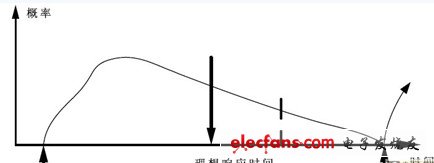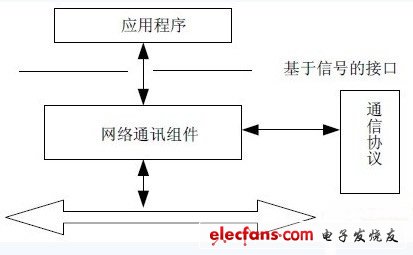1 Introduction At present, automotive electronics is developing in the direction of networking, and in-vehicle networks have become the biggest hotspot in the field of automotive electronics. The key technologies in network bus applications that improve communication reliability between control units and reduce wire costs include CAN, LIN, FlexRey, MOST, IDB1394, etc. For automotive OEMs, CAN network design is the key to the application of CAN network communication. Looking at the existing design technology, it can be divided into two categories: one is the traditional design method based on simulation and testing; the other is the method based on protocol design. The traditional method puts together the requirements of each node for the protocol, verifies the correctness of the protocol through simulation and testing, and finally obtains the communication protocol. The new method uses system design techniques to theoretically model the timing of the system, analyze and design the communication protocol of the system, ensure the real-time performance of the system and the correctness of the protocol, and finally issue the correct communication protocol. This article will briefly introduce the limitations of the traditional design method and the advantages of the new method, as well as the communication network software system designed with reference to the new method. 2 Limitations of traditional design methods With the gradual increase in the number of electronic devices in automobiles, the in-vehicle network system is also becoming more and more complex, and automotive electronic networks are facing huge challenges. The limitations of traditional network protocol design technology are becoming more and more prominent, mainly in three aspects: data loss, communication delay, and difficulty in protocol modification. 2.1 Data loss Data loss refers to the situation in which new data is not transmitted through the network before it is transmitted, or the transmission time exceeds the receiving node's receiving time limit. Data loss will seriously affect the real-time performance of the communication, which in turn will affect the quality of vehicle communication. A system with good real-time performance should completely avoid data loss. The influencing factor of data loss is the communication protocol. The traditional design method checks the correctness of the protocol through simulation and testing. The disadvantage is that it cannot cover all test cases. Therefore, the output communication protocol may have potential errors or incompleteness, which will inevitably cause data loss. , Affecting the performance of the entire system. 2.2 Communication delay Communication delay refers to the waiting time from when the data is ready to be sent through the bus. Communication delay may cause data loss, which is a fundamental problem that cannot be solved by traditional design methods. This is mainly because the traditional design method only puts together the requirements of each node for the protocol, without considering the needs of the entire system. For example, the sending node sends data to the receiving node to receive the data and is used for control. It does not consider the time requirements for implementing such a complete function . Therefore, the protocol design result is difficult to guarantee real-time performance, and there must be communication delay. The failure of arbitration is the main reason for the delay, so the delay is related to the ID and period of the message. The more complex the system, the greater the possibility of contention between messages and the worse the real-time performance of the system. In order to reduce the impact of delay, the traditional design method takes two precautions. One is to set the time limit, as shown in Figure 1. Another kind of limit load is about 30% on average, reducing the possibility of message competition. But neither of these two methods can fundamentally eliminate delay. Figure 1 Time limit setting and calculation of response time 2.3 Difficult to modify the agreement Amending the agreement is inevitable during the development process. However, for the traditional design method, because of the integration of application programs and communication functions, changes in the parameters of the communication protocol will cause the software to be recompiled and tested, which means extra time and cost. . Therefore, it is very difficult for vehicle manufacturers to modify the agreement, and it takes a long time. 3 Features of the new method based on protocol design The protocol-based approach uses system-level design theories and methods to ensure the accuracy of communication protocols, avoid data loss, and ensure the real-time performance of the system. Its characteristics are summarized as follows: 3.1 System-level design to avoid data loss The new technology uses top-down system design techniques to design and optimize the entire system architecture. The theoretical design method can ensure the correctness of the communication protocol and fundamentally solve the problem of data loss. 3.2 Effective control message delay The response time is the total time that the message is ready to be sent to the last node to receive the data. It is the sum of the sending time and the delay. The delay is the main factor affecting the response time. Controlling the delay can effectively control the response time. As shown in Figure 1, by modeling the response time and carefully arranging the message ID and cycle to control the delay time, response time and bus load. Then use the theoretical method to calculate the worst-case delay time, the maximum response value, and the bus load. Because the new method can calculate the maximum bus load and can effectively control the system delay, there is no need to limit the bus load of the system any more, and it can theoretically reach 100%. Its advantage lies in ensuring a certain communication behavior, which can effectively use system resources. 3.3 Separate application programs and communication protocols to ensure flexibility of change As shown in Figure 2, the new method provides standard network communication components for ECU communication functions. This component successfully separates the application program and the communication protocol, so that the respective modifications do not affect each other, ensuring the flexibility of the protocol modification. The network communication component provides standard interfaces for bus, application and communication protocol. The application-oriented interface is a signal-based operation and does not include the parameters of the communication protocol. The interface facing the communication protocol is responsible for identifying the communication protocol. As long as the interface standard is complied with, the protocol can be changed arbitrarily without affecting the application. Figure 2 separate application and communication protocol The advantage of this design scheme is that the vehicle manufacturer can easily modify the protocol without requiring vendor support, thus ensuring the flexibility of system changes, and also increasing the portability of the system and the reuse of applications.   
H05RN-F and H03RN-F are both types of flexible rubber cables commonly used for low voltage applications.
Flexible Copper Conductor Rubber Insulated Cable,Rubber Insulated Power Cable,Rubber Sheathed Power Cable,Electric Silicone Rubber Wire Ruitian Cable CO.,LTD. , https://www.hbruitiancable.com

H05RN-F is a harmonized cable that is suitable for various indoor and outdoor applications. It is typically used for light to medium duty applications such as connecting portable electrical equipment, power tools, and appliances. The "H05" in the name refers to the harmonized code for rubber insulated cables with a rated voltage of 300/500V.
H03RN-F is also a harmonized cable, but it is designed for lighter duty applications compared to H05RN-F. It is commonly used for connecting small electrical devices and appliances, as well as for temporary installations. The "H03" in the name refers to the harmonized code for rubber insulated cables with a rated voltage of 300/300V.
Both H05RN-F and H03RN-F cables are known for their flexibility, durability, and resistance to moisture, oils, and mechanical stress. They are often used in construction sites, industrial environments, and outdoor events where a flexible and robust cable is required.